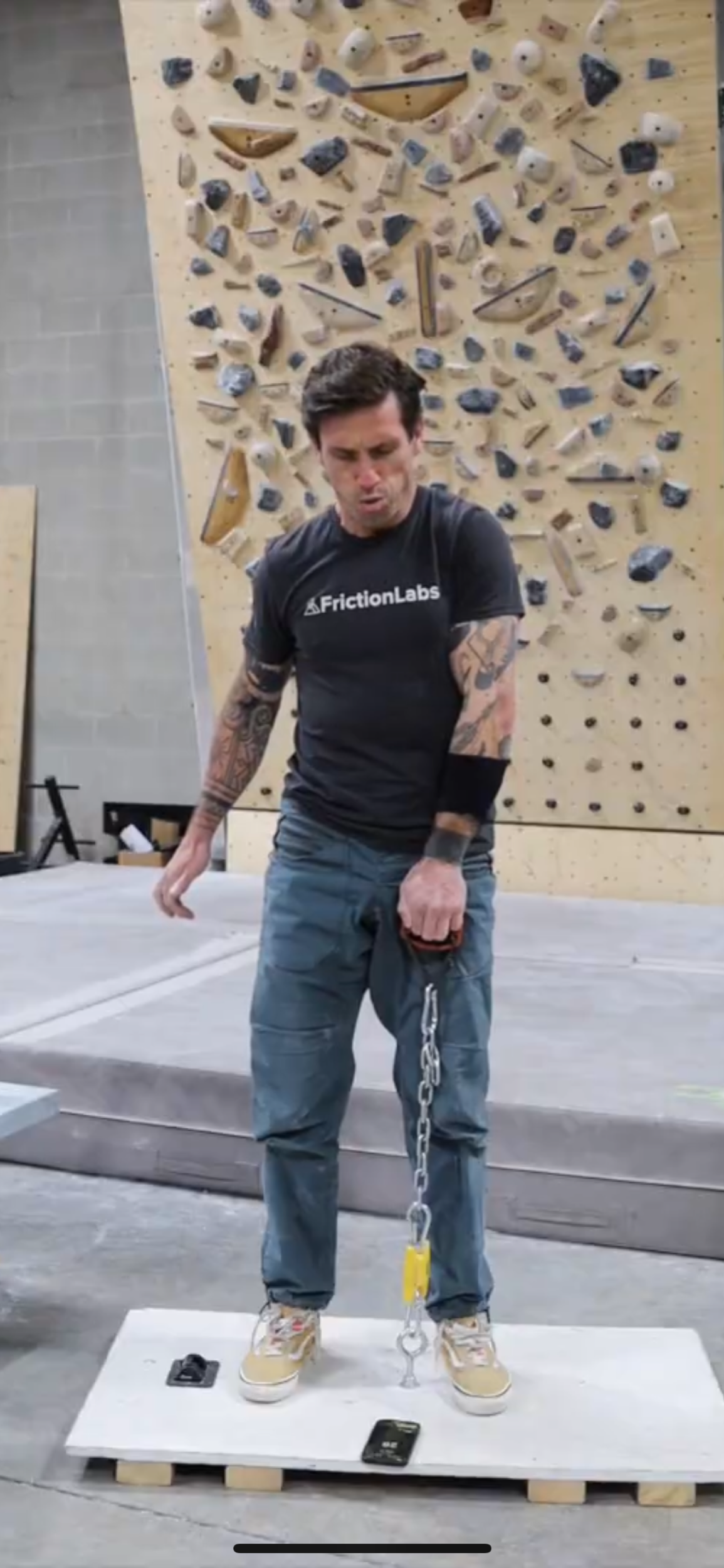Over the last many years, I've invested a lot of time and effort in understanding the adaptations of finger strength training for climbing.
Read MoreDisproportionately, when climbers only use a flat edge with a fixed depth, the middle two fingers take most of the stress.
Read MoreFlexible DIP joint? Watch this tip.
Read MoreThere are 30 muscles in the hand alone.
Read MoreIt’s common to experience pain on a large edge with compression to the tendon sheath and A4 pulley.
Read MoreI’m psyched that more climbers are getting into weight training to supplement their health. The downside is the additional load on the fingers.
Read MoreAt some point, a climber’s finger joints start looking less symmetric side-to-side. Why?
Read MorePlease stop scraping with a tool, or rolling over it with a ring. Those are truly useless.
Read MoreClimbing on small holds requires leverage, and multiple factors define leverage for an individual.
Read MoreWhen we talk about 'active positions' in climbing, we're referring to grips like the half and full crimp.
Read MoreIf you have been climbing for a while, it's easy to understand that hanging below slopers uses much more friction than on other hold types.
Read MoreWhen should you start using this popular training tool?
Read MoreClimbers do a lot of random exercises in hopes of getting more power. But the most effective thing they can do is adjust how they lift weights.
Read MoreThe C4PC bridges the gap between the skills coach and the fitness professional providing coaches with the knowledge and skill set to raise the standard of care and coaching in the climbing community and to become an elite professional in the field.
Read MoreThe body needs stress to build tolerance (capacity). But, as with anything, it has a finite capacity. It's relative.
Read MoreHave you had the experience that not climbing made your fingers just as sore as loading them? This is due to the anatomy and mechanics of the synovial joint.
Read MoreWe all know that training volume is risky, but are there guidelines for what these athletes "shouldn't" do? That is a trickier question.
Read MoreThe A2 is the most commonly ruptured pulley in adult climbers (not kids) and is NOT common in other sports.
Read MoreThe A3 pulley can tolerate more abuse than the A2 and A4 because of its attachment point (the volar plate).
Read MoreI likely prescribe grip variation more often than most (rehabilitation purposes), but coaches must also understand the difference. The implications on your athletes are significant, especially those with shoulder and elbow pain.
Read More


















